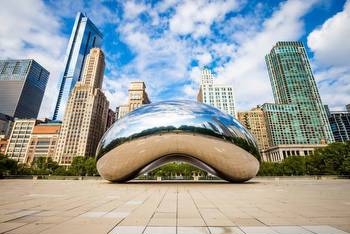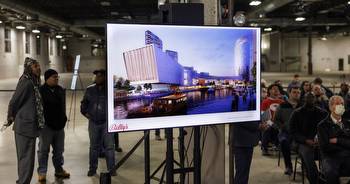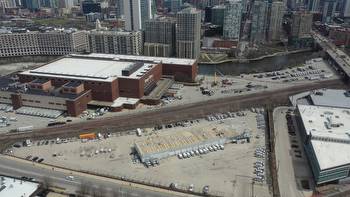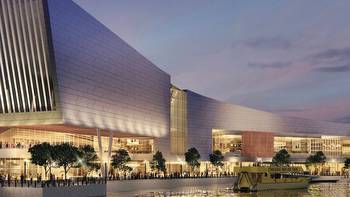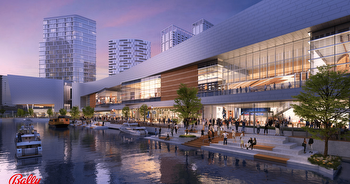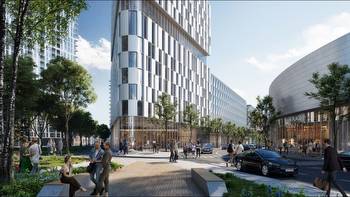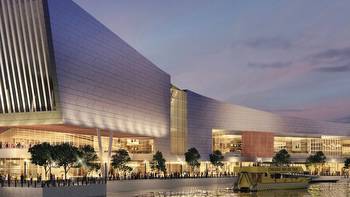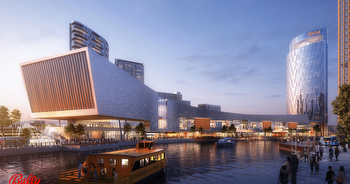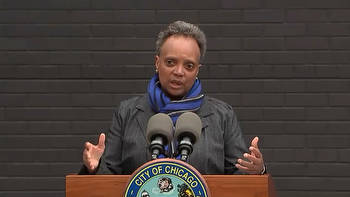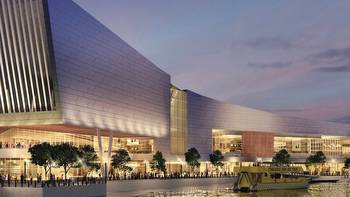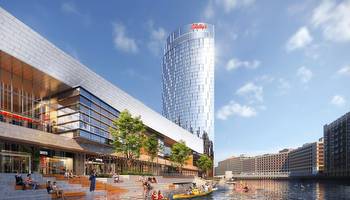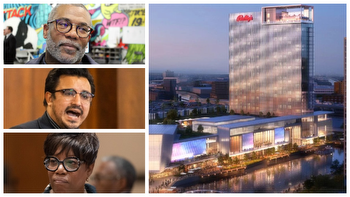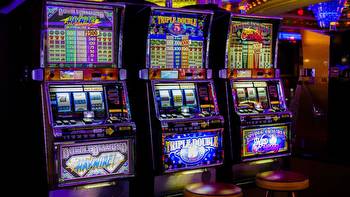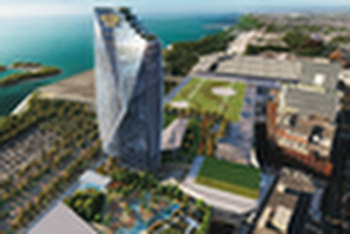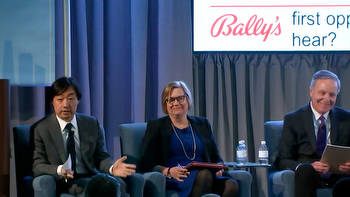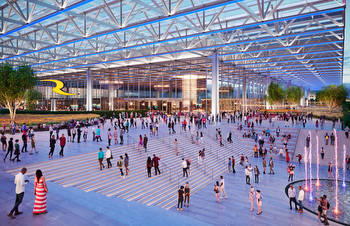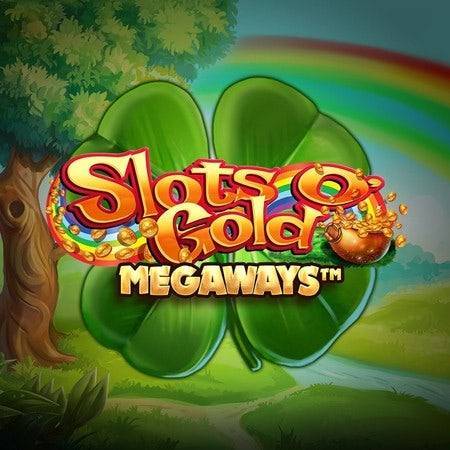Who's left out of the casino?
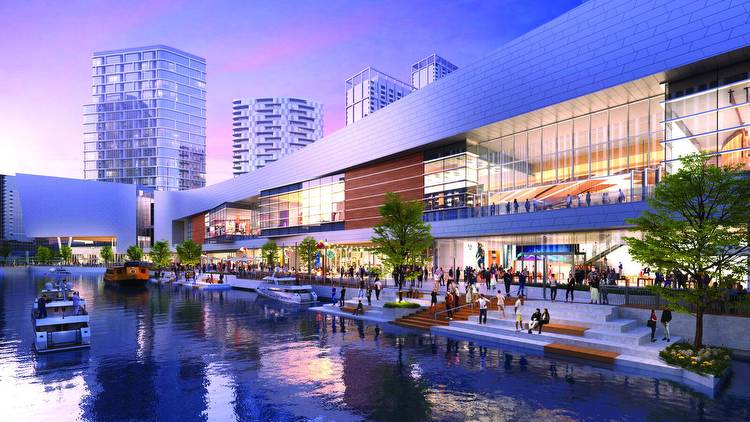
On Wednesday, the city council approved a plan to offer Chicago’s sole casino license to Bally’s Corporation, 41 – 7, with one recusal.
Alderpersons Brian Hopkins (2nd Ward), Anthony Beale (9th), Ed Burke (14th), Ray Lopez (15th), Byron Sigcho-Lopez (25th), Brendan Reilly (42nd), and Michele Smith (43rd) voted against the proposal. Alderperson Sophia King (4th Ward) recused herself from the vote.
The proposal will now go to the Illinois Gaming Board for approval. The state gaming board oversees gambling and gaming through oversight of riverboat and casino gambling, and sports wagering.
If the proposal is approved across the board, the new casino-resort and entertainment complex will be constructed at the Chicago Tribune’s Publishing Center, located at 560 W. Grand near North Halsted Street and West Chicago Avenue in the River West neighborhood. Construction is expected to be completed in 2025. In the meantime, Bally’s plans to operate a temporary casino at Medinah Temple in the neighboring River North neighborhood.
The $1.7 billion casino proposal includes a 3,000-seat theater, a 500-room luxury hotel that would open with 100 rooms, a Riverwalk extension, a pedestrian bridge, an outdoor park, an outdoor music venue, an amenity terrace featuring a large pool spa, fitness center, a sun deck, a food hall, cafes, and six restaurants. It will also offer space for 3,400 slot machines and 170 gaming tables.
The project is expected to generate 3,000 construction jobs annually and 3,000 permanent casino jobs, and bring in $400 million a year in gaming and other revenues for the city and state.
Lightfoot asked for up to $75 million for the city from casino bidders. Bally agreed to give the city $40 million upfront and $4 million annually for the Host City Agreement.
“A city casino signals to the world that our economy is on a strong path toward recovery, ready to develop new and lucrative projects that will benefit all of our residents,” Lightfoot said during Thursday’s press conference. “It would serve as a catalyst for additional large-scale economic developments that would only accelerate our city’s post-pandemic recovery.”
The casino would allow the city to capitalize on gaming and other revenues to provide new funding sources for Chicago police and fire pension funds, she added.
Bally’s Casino will “capture the gaming revenue that has been lost for far too long to neighboring jurisdictions,” Lightfoot continued. Illinois is already home to eight casinos, including the Rivers Casino Des Plaines.
The press conference brimmed with excitement from lawmakers and stakeholders for the possibility of a casino coming to Chicago. It’s an idea that’s been 30 years in the making, beginning with then-mayor Richard M. Daley’s creation of the Chicago Casino Commission in April 1992.
The casino’s proposed site is a stone’s throw away from the former Cabrini-Green Homes public housing projects. At its peak, the complex known for its high-rise buildings was home to at least 15,000 people, predominantly Black and low-income families.
In 1999, Daley announced his intention to tear down the high-rise towers. The city pledged to spend more than $1.5 billion over ten years to demolish 18,000 apartments and build or rehabilitate 25,000 apartments. Despite this pledge, it’s impossible to forget the thousands of Black people displaced from the area that, when they lived there, craved the type of financial investment and opportunity that a new casino would bring.
Today, after the majority of Black residents have been forced out of Cabrini-Green, the neighborhood looks radically different. It’s now scattered with luxury apartments, townhomes, and condos. In the midst of its gentrification, what remains of the legacy of Black people and the housing projects are the two-story row houses hidden just north behind Chicago Avenue, and the Wayman AME church building. The latter was listed for sale as of October 2021, despite its historic roots in the community.
At Thursday’s press conference, Alderperson Walter Burnett, Jr. (27th Ward) spoke about his upbringing in Cabrini-Green. He grew up in the row houses on North Cambridge Avenue, about a mile north of the proposed casino site.
Burnett supports Lightfoot’s casino choice, which would place the new development in his ward. For him, Bally’s casino means progress.
“I wasn’t afraid of progress. I wasn’t afraid of prosperity when we had to tear down the former Cabrini-Green high-rises. I wasn’t afraid,” Burnett said.
The undertones of Burnett’s comments today made it seem like the neighborhood’s previous residents weren’t worthy of the same investment as its successors or that it was OK to displace people because it brought us to the progress we’re seeing today. He acknowledged that the people who live in the community today would not have come to the area when the Cabrini-Green high-rises were still there.
“We helped all of them to prosper in that community and be able to live in the luxuries that they live in now, and that’s because we weren’t afraid because we felt like we needed to do what’s right and help people progress and have a better place to live,” Burnett continued.
Throughout the casino bidding process, the city required that bidders have minority involvement. For example, the city required that casino bidders include 26 percent minority business enterprise participation, 6 percent women business participation, and businesses from Chicago included in the design and construction of the project.
However, Burnett’s comments about Cabrini-Green call that into question. City lawmakers have been making promises to former Cabrini-Green residents for years, and many of those promises never came to fruition. Will it maintain its new promises to minorities and women now?
Following the displacement of thousands of Black Cabrini-Green residents, Daley also promised 2,500 construction jobs and told them they’d be able to return.
A 2021 Better Government Association (BGA) investigation found that of the 2,500 construction jobs Daley promised to Cabrini-Green residents, only 40 people received jobs. Additionally, more than 80 percent of the families who were promised they could return did not because they could no longer afford to live in the neighborhood, “were disqualified, relocated, or were simply overwhelmed with bureaucracy and many died waiting,” according to the BGA’s investigation.
With Black displacement in Cabrini-Green came a sudden overflow of financial investment and new developments that weren’t made available to its previous residents. It’s hard to separate today’s casino announcement from Cabrini-Green’s legacy and what’s to come with Bally’s casino that was made possible at the expense of displacing Black people.
Out of the three casino bids up for consideration, including Rivers 78 and One Central, Lightfoot said she selected Bally’s proposal over the others because of its commitment to meeting equity goals outlined by the casino selection committee. Bally’s is also one of the only operators that did not have a competing casino in the Chicagoland region. She said that Bally’s also has a labor peace agreement with organized labor.
In addition, the forthcoming casino will commit to 60 percent minority hiring and will create a jobs program that targets neighborhoods with the highest levels of unemployment and lowest income.
Burnett also pointed out that having the Bally’s would increase revenue in the city and drive in more visitors. “It would be a disservice for us as [the] government who have a fiscal responsibility to our citizens not to allow this casino to be built in our city,” he said.
However, Burnett added that it would be irresponsible for the city not to take advantage of the opportunity. “Who wants to pay more property taxes,” he asked. “I know I don’t.”
“We believe that Bally’s is ready to bet on Chicago. We think this is a wonderful way for Chicago to continue its recovery from COVID-19,” said Soo Kim, chairman of Bally’s Corporation board of directors.
Kim added that the project is for underrepresented groups of people that capitalism left behind. This project, he added, will include them. Additionally, he said that the project would keep property taxes low.
“We understand how important it is for the other laborers here to work together, build this casino, operate this casino together, and what an opportunity it is for them,” Kim said. “We understand how for all underrepresented groups that in some ways capitalism has left behind, that this is a project that will include them and that it will allow them to be a part of ownership, management, and operations. We understand all of the promises that this casino allows the city of Chicago to keep and the state of Illinois to keep. We accept and bear those responsibilities.”
According to N’Digo, a Black newsmagazine based in Chicago, Bally’s was criticized for how it initially structured minority investment, claiming that after six years, investors could sell their shares.
That has since changed. According to N’Digo, minority investors now can hold onto their investment or sell their ownership position back to Bally’s. The project promises that at least 20 percent of ownership will be women and minorities.
On Monday, May 9, a special committee convened to ask Bally’s questions about its plan, and on Thursday, May 12, the city hosted a community engagement event at UIC. On Monday, a city council committee voted to send the plan to the full council, and on May 25, the council approved the plan.









